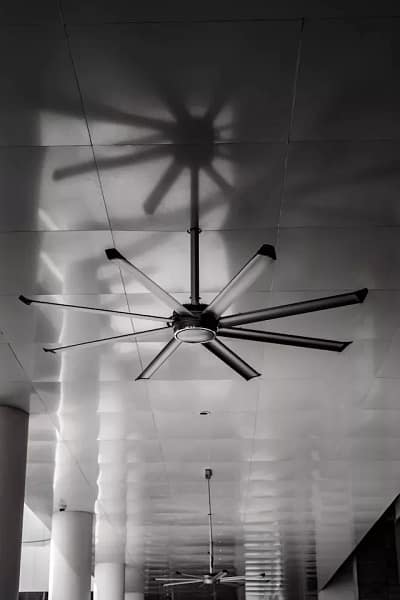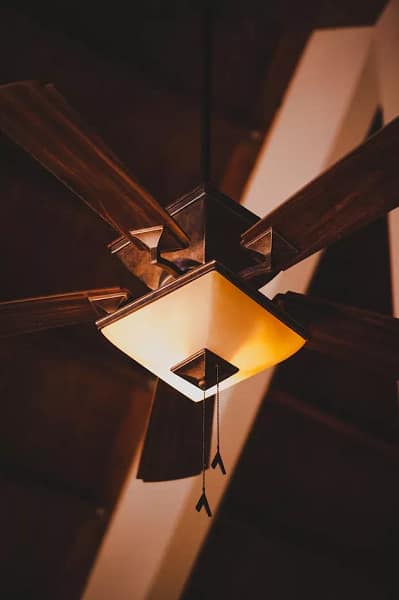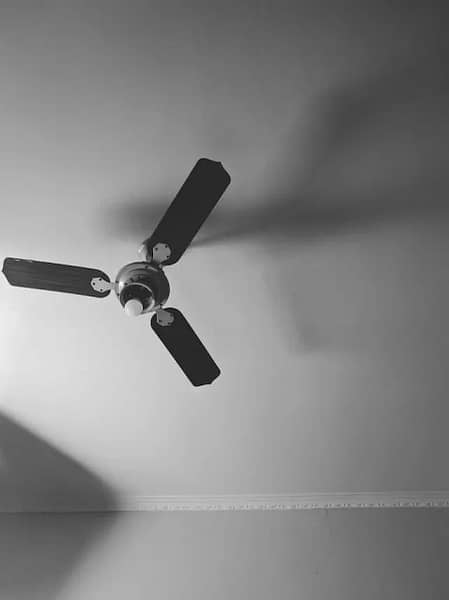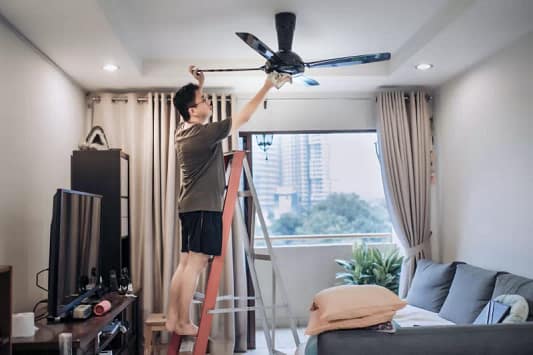When it comes to home renovation, the kitchen is often considered the heart of the home. It’s a space where families gather, prepare meals together, and of course, make memories for years to come. It’s where you start your day over a plate of eggs and end it with a glass of wine. As home remodelers, we understand this and make sure the kitchen reflects all that and more.
While the trends in kitchen remodeling keep changing with time. One that we have seen surfaced a lot lately is ceiling fans.
Do Kitchens Have Ceiling Fans?
While ceiling fans in the kitchen aren’t all that common in the US, it is now becoming increasingly popular.
Many homeowners are now installing ceiling fans with and without lights in the kitchen to enhance the functionality and comfort of their kitchen. That is both a good and bad idea depending on how it’s installed and why it’s installed.
Homeowners can appreciate the improved ventilation and cooling effect a kitchen ceiling fan can provide, especially in hot and stuffy spaces. On the flip side, some find the aesthetics and noise level less desirable, so it’s crucial to strike the right balance for your kitchen’s specific requirements.
In this blog post, we will talk about Pros and Cons of installing a kitchen ceiling fan and if you should consider it for your house.

Pros of Installing a Ceiling Fan in Kitchen
Improved Air Circulation
One of the primary benefits of installing a ceiling fan in your kitchen is the enhanced air circulation it provides. It can also improve the ventilation in the space, adding to the overall ambiance.
A kitchen ceiling fan can help disperse air, reducing hot spots and effectively displacing cooking odors. This works well for making your cooking and dining experiences more comfortable.
Energy Efficiency
Ceiling fans in the kitchen are known for their energy efficiency. They can help you reduce your cooling costs in the summer months and heating costs in the winter months.
In the winter months, you operate your ceiling fan in a clockwise direction. This helps push warm air up and helps disperse it towards the rest of the house. This mechanism effectively heats your living space and is known to bring down the heating cost by up to 10%.
Similarly, during the summer months, your ceiling fan works anti-clockwise. Providing a circulatory breeze that helps cool down the room. This works great as a stand-alone cooling option on mildly hot days without the need for you to turn on the air conditioning.
Moreover, when equipped with lights, they offer dual functionality. Helping you save on energy bills.
Enhanced Ventilation
Ceiling fans with exhaust options can remove cooking odors and excess moisture, making the indoor air healthier.
This is why a lot of commercial kitchens have this kind of ceiling fan. They prevent the space from getting too hot and help with the cross-ventilation of air. This prevents all the different cooking odors from accumulating in the room. It keeps the air fresh and breathable without getting too musty.
Aesthetic Appeal
There are many kitchen ceiling fans with lights to choose from. They can be both functional and add to your kitchen’s look.
A lot of modern kitchen designs now incorporate a minimalistic ceiling fan to add a touch of character to the room. They also come in plenty of designs and colors to blend in with your theme.



Cons of Installing a Ceiling Fan in Kitchen
Installation Cost
Before choosing the best ceiling fan for your kitchen, consider the cost of installation, especially for electrical work. In our part of the world, kitchens usually don’t have ceiling fans already installed. Hence, the wiring must be planned separately for a successful installation.
However, many homeowners find that the long-term benefits offset the upfront investment. But it’s one of those things you need to consider especially if you’re on a budget.
Space Limitations
In smaller kitchens with limited ceiling space, installing a ceiling fan can be challenging. You need to ensure that there’s sufficient clearance and space for the fan to operate optimally without interfering with other fixtures.
This problem isn’t all that big since ceiling fans are now manufactured in all shapes and sizes. However, it can be a challenge to find one that fits perfectly within your kitchen.
Maintenance
Like any other appliance, kitchen ceiling fans with lights require periodic maintenance. Dust can accumulate on the blades and in the motor so it needs to be cleaned from time to time. Sometimes the cleaning needs to be done professionally to prevent damage and ensure proper work.
You also may need to replace bulbs or remote controls over time. All of these things tend to add up over time increasing the maintenance costs.
Noise
While modern ceiling fans are designed to operate quietly, some may still produce noise, particularly at higher speeds. Consider this if your kitchen is open to other living spaces and you don’t like a lot of noise in the room
Aesthetic Disruption
Yes, we know this is a little self-contradictory but hear us out! It’s essential to select a kitchen ceiling fan that complements your decor rather than competing with it.
While a minimalistic ceiling fan can seamlessly blend in with your decor if rightfully placed. Sometimes, it can appear bulky and disruptive for the aesthetic. Especially when you’re installing a ceiling fan as a stand-alone project rather than as a part of a whole kitchen remodeling project.
So, should you install a ceiling fan in your kitchen, Yes Or No?
The answer is yes, for most homeowners, as the benefits usually outweigh the cons. Some major considerations while making the decision should include:
Aesthetic Appeal
See whether a ceiling fan would fit in with the rest of your kitchen’s theme and design without appearing bulky and out of place. Look up “ceiling fan in kitchen ideas” or “best ceiling fans for kitchens” on home design websites and Pinterest and you’ll surely find some inspiration!
Space Consideration
To determine if a fan is suitable for your ceiling, consider its size and design and how it will affect other fixtures like chandeliers.
Installation Cost and Work
Finding the right person to do the job is essential. If your kitchen doesn’t already have an outlet for a ceiling fan, the wiring needs to be worked out from scratch. Consider if you want to go through all that hassle before you commit to it.
In conclusion, ceiling fans in kitchens can improve air circulation, save energy, and enhance ventilation. When chosen thoughtfully and installed correctly, a ceiling fan can be both a practical and aesthetic asset to your kitchen. It helps make your kitchen a more comfortable and inviting place for you and your loved ones.







